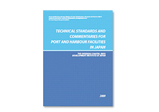"3 weeks" series
Jump to navigation
Jump to search
In
this series you will have the possibility to get a more detailed
understanding of the basics of OpenFOAM. You will be able to complete it
in about three weeks. It is understandable, that you are exited.
Everybody is, but please do not work on the weekends. Breaks are
important for the learning process. This is the reason, why the
tutorials are divided into fifteen days (see figure below). Do not skip
the weekends! Some time without OpenFOAM is also important. You can
start by clicking
Day 1 below.
Go back to
Tutorials.
Installing OpenFOAM
In order to be able to complete the tutorials, you will have to
install OpenFOAM. There are multiple ways to do this. First, follow the official guideline
here.
Alternatively, you can follow the video tutorial of
Jozsef Nagy or the written tutorial of
Joel Guerrero.
If you prefer Windows 10, you can find a tutorial on installing OpenFOAM in Windows 10
here.
General overview of the "3 weeks" tutorial series
On Day 1 you will start to get familiar with OpenFOAM. Just follow
the instructions step by step and familiarize yourself with the concept
of OpenFOAM, Linux, the terminal and working with dictionaries.
- basic workflow in OpenFOAM
- getting used to the terminal
- meshing with the OpenFOAM internal meshing utility blockMesh
- running simulations
- first steps with postprocessing in Paraview
On Day 2 you will continue with your first steps. You will get an
even deeper understanding and learn the work flow of OpenFOAM with a
special focus on visualization of results.
- more detailed understanding of the work flow
- further short and fun simulations
- grid convergence
- transport equations
- detailed scientific visualization of results
On Day 3 you will
digest all the information from the previous days by listening to a talk on the basics of OpenFOAM.
On Day 4 you will understand the theory behind OpenFOAM by taking a
detailed look at the discretization of the equations and the numerical
settings. We will cover a big theoretical area about
- gradient scheme
- gradient limiter
- convection discretization
- face interpolation
- diffusion discretization
- influence of discretization on the simulation results
- CFL number
- linear solvers
- solution methods
Day 5 is there to
round off the week with some fun
simulations. Also we give you links to some interesting documents, which
can help you solve your problems in OpenFOAM in the future.
Day 6 is all about meshing. In order to be able to run simulation for
real life problems, you have to understand how to create an arbitrary
high quality mesh and which alternatives you have in OpenFOAM. For this
you will learn about
- geometry creation
- mesh generation
On Day 7 we will talk about turbulence modeling, as this is one of
the most important aspects in a CFD simulation. It is important to
understand the models as well as the difference between them ion order
to choose the correct one for a given problem. Here we will cover the
following topics:
- steady-state turbulence modeling
- transient turbulence modeling
- Reynolds-Averaged Navier-Stokes equations
- Large Eddy Simulations
- initial and boundary conditions
- case setup
On day 8 we continue our investigation of
turbulence modeling by doing
extensive parameter studies
to understand the idea behind turbulence modeling, the difference
between models and the actual application. After this day you will be
able to choose the correct model for your own problem.
On Day 9 we will start another important topic in CFD,
multiphase modeling.
It is important to understand the additional physics involved to
correctly set up the simulation case and to run the simulation. We will
take a look at the available models and focus on the
Volume-Of-Fluid Method and run several simulations to fully understand the theory and to gain experience in the simulations.
On Day 10 we will take a look at the possibility to parallelize
simulations in OpenFOAM. This is important, as high-quality simulation
setups tend to be computationally very intensive. In order to reduce
computation time, you will learn about
- the idea of parallelization
- domain decomposition
- steps of parallelization
- postprocessing parallel results
On Day 11 we will take a look at programming. Today is all about the
initial steps. By now you should be able to run simulations of real life
problems with OpenFOAM. In some cases models might not be implemented
in the source code. OpenFOAM offers through an open source code the
possibility to add models to the existing code. This might be a
challenging task, but with the following tutorials, you will get a basic
understanding of the work flow.
On day 12 we will further explore the programming possibilities
OpenFOAM offers to extend the source code according to our needs. First
we start with a video of Professor Jasak on programming. Can you follow
the other two tutorials after that?
(
https://wiki.openfoam.com)
Although you already programmed applications the days before, on Day
13 we take a look at the basics of C++ and start with simple examples,
so you can view them from a C++ perspective.
Today we continue with programming. There is only one tutorial, but
this tutorial consist of multiple examples and explains a lot.
On Day 15 we finalize our 3-weeks-series by doing a fun programming simulation and going through a couple of pages of pdf.
We reached the end of Day 15 and with that the end of the
3-weeks-series. Now, now... Let's not get emotional here. Let's think
about all the great challenges and successes in your CFD career with
OpenFOAM and look forward to the future.
Also you can take a look at the collection by topic, where you can find further tutorials in different topics.
With this in mind... cheers!



